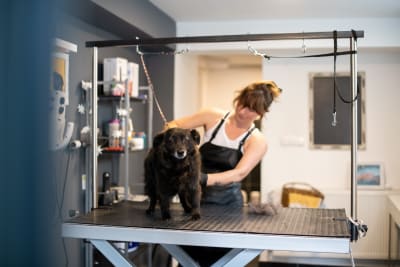Idaho is not exempt from the increasing demand for veterinarians. It would be no exaggeration to say that the state is desperate for individuals who want to pursue a career in this profession.
The state also has several organizations for career opportunities, including the Idaho Veterinary Medical Association. Below, we explore in detail all the requirements an interested individual must meet to call themselves a full-fledged veterinarian in Idaho.
These include, among other things, the undergraduate and postgraduate educational requirements, the relevant examinations, and the licensing and certification requirements. We also showcase some accredited programs, current salary projections, and predictions for the coming years.
How to Become a Veterinarian in Idaho
The following are steps expected of prospective veterinarians in Idaho.
Preparatory Stages
In the early stages of their journey, candidates are expected to prepare for their veterinary career by maintaining good grades in high school, choosing the right undergraduate program, and earning a bachelor’s degree. It is advisable to go with programs about natural sciences such as biology, chemistry, biochemistry, and animal science.
Additionally, candidates may take business and communication courses before veterinary school to help them develop soft skills and leadership skills.
Doctor of Veterinary Medicine
During vet school, Idaho candidates are expected to learn about animal anatomy, behavior, health, and diseases, among other subjects. The first three years of their education will be geared toward classroom instruction, but the last year will be for clinical rotation and work experience.
Ultimately, they can graduate with a Doctor of Veterinary Medicine degree. It is also absolutely important for applicants to choose an accredited vet school; otherwise, their education will be generally invalid.
There are currently about 30 accredited vet schools in the United States, and we will explore the best options for Idaho candidates in an upcoming section.
North American Veterinary Licensing Examination
The NAVLE is a national examination that all veterinarians must pass before graduating with their Doctorate of Veterinary Medicine degree. This exam contains 360 multiple-choice questions taken on a computer.
After this step, candidates may worry about possible state certification and licensing, which we explore further below.
Explore other careers with similar paths:
Top Veterinary Schools in Idaho
These are the top accredited programs for future veterinarians in Idaho.
Washington State University
Pullman, WA Campus Only
As the state of Idaho does not have an accredited veterinary medicine program, candidates typically have to consider neighboring options. In this regard, Washington State University's College of Veterinary Medicine offers an excellent program to consider.
Tuition
$594 - $1,422 per CreditContact
(509) 339-8105
admissions@vetmed.wsu.edu
Oregon State University
Corvallis, OR Campus Only
Another neighboring option for aspiring veterinarians in Idaho to consider is the program offered by Oregon State University. This program has existed for decades and has produced successful graduates.
Tuition
$31,598 - $60,710 per YearContact
(541) 737-2141
vetmed@oregonstate.edu
Explore nearby states for education and training:
Licensure & Certification Requirements
After completing the steps above, veterinarians in Idaho must meet the state requirements before they can start working legally. Currently, candidates looking to become licensed veterinarians in the state must meet the Idaho Board of Veterinary Medicine requirements.
For starters, candidates must be prepared to pay the licensing fee, which varies yearly but usually ranges between $119 and $303. This will allow them to earn a valid license for a year.
Candidates must complete 15 hours of continuing education to renew their licenses. The state does not have a reciprocity agreement but does offer a temporary license.
Applicants must also provide their transcripts and professional references and be willing to undergo a background check, which costs $42. Furthermore, the state requires proof of citizenship and an open-book jurisprudence examination.
Salary & Career Outlook
As a veterinarian practicing in Idaho, I expect the annual average salary to be around $118,843. This is typically relevant to those who are much better off than the lowest-paid in the state but still need to be in the higher-earning categories.
Those who start from the bottom 10% category manage an annual average salary of $80,748 and can improve to $174,911 once in the highest-paying category. Some factors that influence which category a veterinarian will fall into include their experience level and location within the state. Other factors like credentials and the nature of the employer also play their parts.
Favorable locations in Idaho include Moscow, where veterinarians earn an annual average salary of $129,924; Rexburg, where the salary is $129,911; and Nampa, where the salary is $128,100.
Regarding career outlook, the Bureau of Labor Statistics predicts a 19% employment increase for veterinarians over the next decade.





